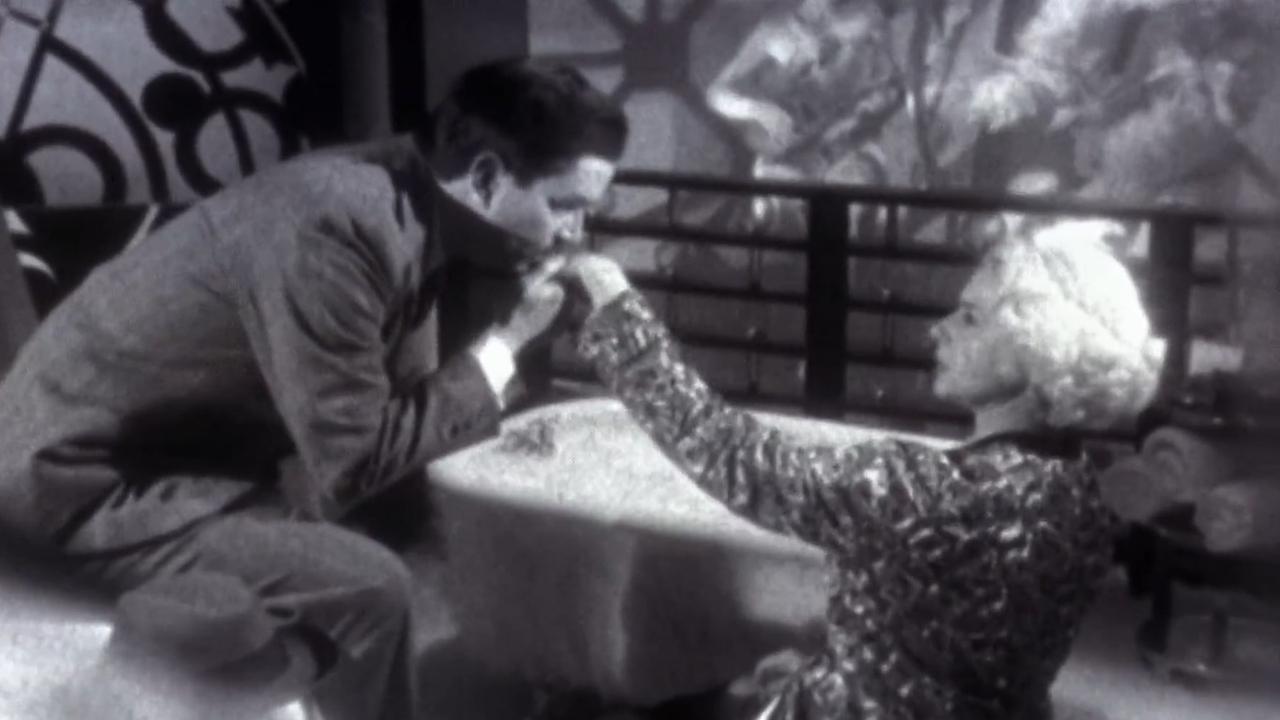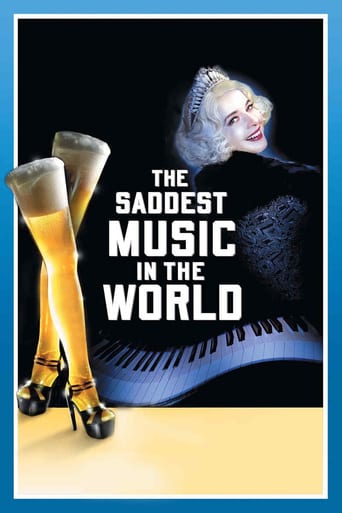

So this is the most accessible of all of Guy Maddin's movies. It has a better blend of humour and seriousness than some of his other attempts.Plus there are glass legs of beer to look forward to. Guy Maddin's movies are a unique Canadian treasure. They are stylized as old movies similar to very old German mountaineering movies. His movies make use of a lot of silent film era tropes and often tell stories particular to his Manitoban town.What helps this movie excel, where some of his other attempts fall flat is that the main character for this movie is not the moody character, but rather the fun slick salesman, Mark McKinney.Lady Helen Port-Huntley (Isabella Rossellini), is holding a world-wide radio competition for the saddest music to sell her beer as this movie is set in era when American prohibition was ending and her Canadian monopoly was about to end.Contestants from all around the world show up to compete and old family feuds and grievances also come into play. Maria de Medeiros has an excellent turn as well as Narcissa.
... View MoreI'll be honest, I loved this movie. That being said, I wouldn't recommend it to everyone or even anyone but a few arcane film technique fetishists. The movie has the feel of a lost classic, but it's so damn goofy that it's hard to figure out where it's coming from much less where it's trying to take you. People who watch expressionist films will understand the technique of "just going with it" and seeing how you feel at the end.Maybe that's Maddlin's flaw? He forgets that modern audiences are always checking in with themselves and questioning the images they see always ready to click away from content they dislike. My friend walked out of "Coffee and Cigarettes" after the second episode, he'd given it a fair shake and didn't see any chance of it improving. But it did. Oh man it did. He would have been rewarded if he would have just went with it for a bit.So admittedly, I was confused and alienated by big stretches of The Saddest Music In The World. It's true the characters are too ridiculous to care about much and the dissociative camera work does as much to take you out of the scene as put you in. And the brilliant Two-stripped color scenes are so bright and vibrant that the mono-tinted and black and white scenes that follow them don't have much punch. On the whole it pastiche's together more styles than a single movie should: expressionism, musical, silent, early talkie, early color, comedy, even some very documentary looking montages recalling the earliest documentaries. And the sound was as poorly mixed as any major film release i've ever seen. The film's message is obscured in it's own aesthetics so thoroughly that one can scarcely get a footing on anything like meaning or message.I could go on and on about the flaws of this movie. As for it's graces? its genuinely funny in parts, original in others, it feels like an old distressed classic which is fun for buffs like me. But all this is cursory.So why the hell did I like this movie so much? I liked it an awful lot. I liked it because it's messed up and it's messy. It seemed to be having fun throughout most of it and if you give yourself over to: stop asking sensible questions and try to have some fun, because really-if you do that you'll have a blast at this movie.
... View MoreMuch like "They Shoot Horses, Don't They?", this movie shows Depression-era people trying to make something of themselves by participating in a contest, even if they have to degrade themselves somewhat. In this case, beer baroness Lady Helen Port-Huntley (Isabella Rossellini) wants to find out who can play the saddest music possible - offering a $25,000 prize - so people from all over the world come to take part.Sound like a strange idea? I guess that it is, but they do a good job with it. The surreal nature of everything here is accentuated by the camera-work (hand-held and often blurred). "The Saddest Music in the World" is part indictment of capitalism, part look into peoples' desperate lives, but all very perceptive. Another good point for Canadian cinema, and for Isabella Rossellini.
... View MoreIn order to 'get' the films of Guy Maddin, it helps if you understand cinema. George Toles and Guy Maddin are in LOVE with Silent Films. George tends to enjoy, from what I've learned, melodramas while Guy is more involved with Expressionism. If you were to ask Guy about references and intertexuality, chances are you would open up a vast discussion. If you were to ask George, chances are he would dismiss the notion that you need to 'read a book' to enjoy his film.There are audiences that probably won't enjoy Saddest Music. But for me it was a truly magical tragicomedy, with characters I cared about, an outcome that seemed suited for everyone, and music sequences that were haunting and daring.Ross McMillan is a wonderful performer in this film. Incidentally, he's also a wonderful playwright and a really nice guy.It isn't surprising that one reviewer on this list dislikes the work of Guy Maddin despite being drawn into the work of Svankmajer and the Brothers Quay. What Guy Maddin and George Toles create for us in this work is 'sadness as a subject.' Raw human emotion. And while there is plenty of work for the intellect, the post-modernist tends to avoid emotion as if it's an alien thing. But in the work of Maddin, you will not find the sort of self-congratulation that is so easy to spot in the work of self labeled avant-gardists.I recommend that folks open up their minds and HEARTS to the world of Guy Maddin. Take a trip to Winnipeg. Start here....
... View More